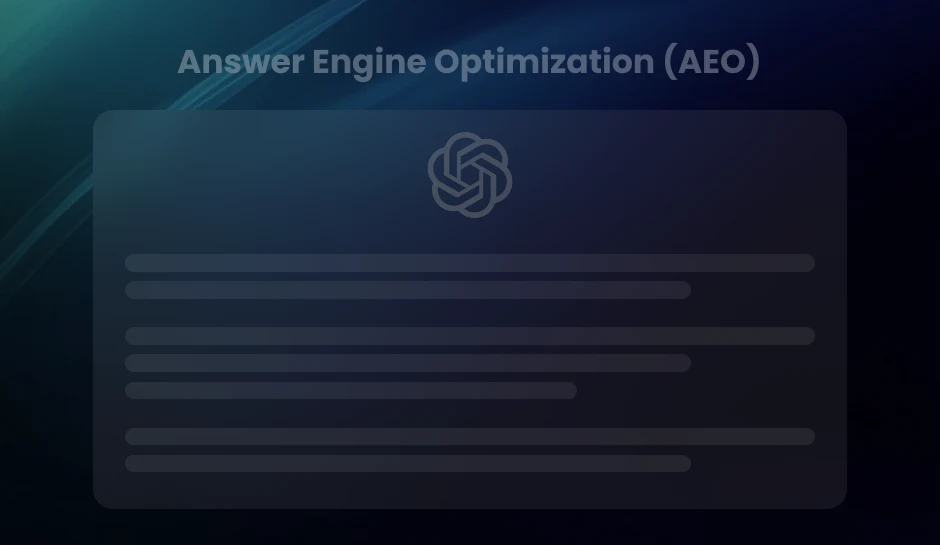
Using Performance Attribution Techniques to Support Decision-Making
Performance attribution provides businesses with the tools to go beyond surface-level results and understand the key drivers behind their success. By connecting strategies across marketing, sales, and product development to measurable outcomes, this approach enables data-driven decision-making that fuels growth and long-term success.
What if you could stop guessing about the factors driving your business success and instead know exactly what’s working? Whether it’s marketing campaigns, sales strategies, or customer engagement efforts, every decision has a ripple effect. But too often, companies are left with only the final numbers, without a clear understanding of what made those numbers come to life.
This is where performance attribution techniques become game-changers. Think of them as a magnifying glass that reveals the hidden drivers behind your results — from the most effective marketing channels to the sales tactics that seal the deal. It’s not just about tracking performance; it’s about understanding why your strategies are succeeding or falling short.
By diving into performance attribution, you gain the power to make smarter, more informed decisions. Whether you’re looking to optimize marketing spend, refine sales approaches, or improve customer retention, this approach provides the clarity you need to take your business to the next level.
What Are Performance Attribution Techniques?
Performance attribution helps businesses understand why certain strategies or decisions lead to specific outcomes. It goes beyond just measuring results and breaks down the factors that directly contribute to success or failure.
In essence, attribution connects your marketing, sales, and product development efforts to measurable outcomes. It provides a clear view of which actions create the most value, and where changes are necessary to optimize performance.
Instead of simply tracking numbers, attribution identifies what works and why it works, enabling businesses to make data-driven decisions.
Understanding Performance Attribution Techniques
With performance attribution, businesses can achieve the following:
- Clarify Impact:
- Identify Key Drivers:
- Optimize Resource Allocation:
- Improve Decision-Making:
- Track Performance Over Time:
Pinpoint the direct impact of marketing, sales, and product development strategies on key metrics.
Understand which specific actions or strategies contribute to business growth or customer acquisition.
Identify high-performing strategies, enabling better resource and budget allocation.
Make more informed, strategic decisions based on clear, measurable outcomes.
Continuously measure and analyze performance to identify trends and refine strategies.
How Performance Attribution Supports Decision-Making
When it comes to making business decisions, guesswork doesn’t work. You need to know exactly what’s working and why. This is where performance attribution comes into play. It takes the guesswork out of the equation and replaces it with data-driven insights that tell you exactly which strategies are producing results.
So, how does it help? Simple. With attribution, you can see clearly which actions in marketing, sales, or product development are driving the outcomes you want. Here’s how it works:
- Marketing:
- Sales:
Want to know which marketing campaigns are bringing in conversions? Attribution helps you see which channels, such as social media, email, or search, are delivering the biggest impact. This helps you focus your budget on the best-performing channels and refine your campaigns for even better results.
Attribution shows you which sales tactics lead to the highest closing rates. Whether it’s personalized outreach or timely follow-ups, it helps your sales team understand which strategies work best. This means they can spend more time on high-impact tactics and improve their approach to each lead.
Want to know which features are keeping users engaged? Attribution helps you identify which aspects of your product are driving user adoption and retention. This allows your product team to prioritize features that meet customer needs and improve overall satisfaction, reducing churn.
By using performance attribution, you’re shifting your focus to the strategies that matter most and eliminating any guesswork. Every decision becomes more purposeful and aligned with what really works.
Pro Tip- For the best results with performance attribution, track both short-term and long-term outcomes. Some strategies may show quick results, while others may build long-term growth. Understanding both helps you get the full picture of what’s driving success.
Tools and Software for Performance Attribution
When implementing performance attribution, choosing the right tools can significantly enhance the accuracy and efficiency of your decision-making. These tools are designed to capture data across various channels, providing businesses with clear insights into the effectiveness of their strategies. Here’s a breakdown of popular tools used in performance attribution and how they can help businesses make data-driven decisions.
1. DiGGrowth
DiGGrowth is a specialized performance attribution tool that offers advanced analytics for businesses looking to connect their marketing and sales strategies to measurable outcomes.
Key Features
- Multi-Touch Attribution:
- Customizable Reports:
- Seamless Integrations:
Allows businesses to track the impact of multiple touchpoints throughout the customer journey, rather than just focusing on one.
Provides detailed reports on marketing performance, helping businesses focus on the highest-performing strategies.
Integrates with popular marketing and CRM platforms, such as Google Analytics, HubSpot, and Salesforce, to give a holistic view of your data.
Advantages
- Optimized Marketing Spend:
- Actionable Insights:
By understanding which channels are most effective, businesses can allocate resources more efficiently.
DiGGrowth offers clear insights into what’s driving conversions, helping businesses optimize their campaigns in real-time.
2. Google Analytics
Google Analytics is a leading digital analytics tool that helps businesses track web traffic and user behavior. While it’s commonly used for website analytics, its attribution features offer valuable insights, allowing businesses to assess the effectiveness of their marketing efforts across multiple channels.
Key Features
- Attribution Models:
- Cross-Channel Insights:
- Goal Tracking:
Google Analytics provides several attribution models, including last-click and linear attribution, to analyze customer paths across various touchpoints.
It tracks users across multiple channels, such as organic search, paid search, social media, and more, providing a comprehensive understanding of marketing performance.
Businesses can set up goals and track how different marketing campaigns and strategies contribute to these goals.
Advantages
- Comprehensive Data:
- Cost-Effective:
Google Analytics offers insights into user behavior, traffic sources, and conversion paths, making it easier for businesses to understand the full customer journey.
Google Analytics is free for most businesses, offering an accessible way to get started with performance attribution.
3. HubSpot
HubSpot is a comprehensive platform that integrates inbound marketing, sales, and CRM functionalities. It offers powerful attribution features, allowing businesses to track customer journeys across various touchpoints, measure the performance of marketing efforts, and optimize strategies for improved conversions and customer retention.
Key Features
- Attribution Reporting:
- Integrated CRM:
- Lead Scoring:
HubSpot’s attribution reporting feature shows how different marketing channels contribute to conversion rates, sales, and customer retention.
HubSpot seamlessly integrates with its CRM system, allowing businesses to connect sales activities with marketing efforts for a full view of customer behavior.
HubSpot provides lead scoring capabilities, allowing businesses to track which leads are more likely to convert based on previous interactions.
Advantages
- Integrated Ecosystem:
- Ease of Use:
HubSpot’s unified platform means businesses can track performance across marketing, sales, and customer service, all in one place.
HubSpot’s user-friendly interface makes it simple for businesses to set up attribution tracking and analyze the results, even without technical expertise.
4. Marketo
Marketo, an Adobe product, is a powerful marketing automation platform with advanced attribution capabilities, particularly suited for enterprises and businesses with large-scale marketing operations.
Key Features
- Multi-Touch Attribution:
- Lead Nurturing:
- Advanced Reporting:
Marketo supports multi-touch attribution, giving businesses a better understanding of how each touchpoint contributes to conversions.
The platform helps businesses track leads throughout the customer journey and understand how nurturing efforts contribute to conversions.
Marketo offers detailed and customizable reports, enabling businesses to analyze the performance of campaigns in depth.
Advantages
- Custom Attribution Models:
- Powerful Integration:
Businesses can create custom attribution models tailored to their unique needs, ensuring that all relevant touchpoints are tracked accurately.
Marketo integrates with a variety of other tools and systems, including CRM platforms like Salesforce, to ensure accurate tracking and reporting.
5. Salesforce
Salesforce is a leading CRM platform that provides robust attribution tools, helping businesses connect their marketing efforts with sales outcomes.
Key Features
- End-to-End Attribution:
- Customizable Dashboards:
- Integrated Marketing Automation:
Salesforce allows businesses to track customer interactions from the first touchpoint to final conversion, providing a complete view of the customer journey.
Salesforce offers highly customizable dashboards that allow businesses to track specific attribution metrics that matter most to them.
Salesforce’s marketing automation capabilities enable businesses to seamlessly link their marketing strategies with sales activities.
Advantages
- Holistic View of Customer Data:
- Real-Time Insights:
Salesforce’s attribution tools are integrated directly into its CRM, providing a complete view of each customer’s journey across sales and marketing touchpoints.
The platform provides real-time reporting, enabling businesses to adjust strategies based on current performance.
| Tool | Best Suited For | Unique Value Proposition |
|---|---|---|
| DiGGrowth | Businesses requiring advanced attribution analytics | Provides deep insights into the entire customer journey and campaign impact. |
| Google Analytics | Businesses needing a comprehensive, cost-effective tool | Free access to powerful attribution tools, seamlessly integrated with other Google products. |
| HubSpot | Growing businesses looking for an all-in-one solution | Streamlined platform for tracking all marketing, sales, and service activities in one place. |
| Marketo | Large enterprises with complex marketing needs | Customizable attribution models and lead management tailored for enterprise-scale operations. |
| Salesforce | Businesses focused on CRM integration with marketing performance | Deep CRM integration offers a holistic view of customer data across sales and marketing. |
Best Practices for Continuous Monitoring and Adjustment
Performance attribution is not a one-time task; it’s an ongoing process that needs constant attention and fine-tuning. Keeping your attribution practices relevant and effective is essential for making accurate, data-driven decisions. By following these best practices, businesses can ensure that their attribution models evolve with changing conditions and continue to drive growth:
- Review Attribution Models Regularly:
- Stay on Top of Industry Changes:
- Set Clear KPIs for Each Stage of the Funnel:
- Incorporate Cross-Department Collaboration:
- Monitor and Adjust Based on Customer Feedback:
- Leverage Advanced Analytics Tools:
- Test and Optimize Continuously:
As market dynamics and strategies shift, staying on top of your attribution models ensures you’re capturing the most relevant data and optimizing your strategies accordingly.
The digital landscape is constantly evolving, with new trends, platforms, and technologies emerging. Monitoring these changes allows businesses to adjust their attribution techniques, ensuring that the data you collect remains accurate and relevant to the current market.
Defining KPIs for each stage of the marketing and sales funnel allows for better insights into how strategies perform at each touchpoint. This ensures that attribution accurately reflects the contribution of various tactics throughout the entire customer journey.
Performance attribution impacts all departments, marketing, sales, product, and customer service. By involving these teams in your attribution process, you ensure alignment across the organization and gain a more comprehensive understanding of what drives business success.
Customer feedback provides invaluable qualitative data that complements the quantitative insights from attribution models. Combining both helps refine strategies and improve customer satisfaction, retention, and overall business performance.
As your business grows, leveraging advanced attribution tools will automate much of the process, providing real-time, actionable insights. These tools not only save time but also ensure your attribution data remains precise, giving you the ability to make quick, informed decisions.
Performance attribution is most effective when it’s part of an ongoing cycle of testing and optimization. Continuously analyzing data, adjusting strategies, and measuring outcomes ensures that you’re always improving and adapting to what’s working best for your business.
Key Takeaways
- Performance attribution reveals the hidden drivers behind your business results, allowing you to make informed decisions across marketing, sales, and product development.
- By identifying which strategies work and why, businesses can optimize their resource allocation and improve ROI.
- Attribution models help track key metrics, enabling businesses to focus on high-performing tactics and refine underperforming ones.
- Continuous monitoring and regular adjustments to attribution strategies ensure they remain aligned with evolving market conditions and business goals.
- Using advanced attribution tools enhances the accuracy of insights, providing a comprehensive understanding of customer behavior and performance trends.
Are you ready to unlock the full potential of your business strategies? Let’s talk.
Conclusion
Attribution techniques go beyond simply tracking outcomes—they aim to uncover the reasons behind them. By leveraging these techniques, businesses can gain valuable insights, refine their strategies, and fuel growth. This approach empowers you to make informed, data-driven decisions, whether you’re optimizing marketing initiatives, fine-tuning sales strategies, or boosting customer retention.
To ensure long-term success, it’s essential to keep your attribution methods flexible and aligned with market changes. Regularly reviewing and adjusting your strategies will keep your business competitive, ensuring you’re always focusing on the tactics that deliver the best results.
Our experts at DiGGrowth can help you harness the power of performance attribution and drive your business forward.
Reach out to us at info@diggrowth.com
Ready to get started?
Increase your marketing ROI by 30% with custom dashboards & reports that present a clear picture of marketing effectiveness
Start Free Trial
Experience Premium Marketing Analytics At Budget-Friendly Pricing.

Learn how you can accurately measure return on marketing investment.
Additional Resources
Don’t Let AI Break Your Brand: What Every CMO Should Know
AI isn’t just another marketing tool. It’s changing...
Read full post postFrom Demos to Deployment: Why MCP Is the Foundation of Agentic AI
A quiet revolution is unfolding in AI. And...
Read full post postAnswer Engine Optimization (AEO): The New Frontier of SEO in 2025
As digital experiences continue to evolve, so does...
Read full post postFAQ's
Yes, performance attribution can be used for both digital and traditional marketing efforts. By tracking offline interactions such as events, print ads, and direct mail, businesses can connect these touchpoints to customer actions and measure their impact.
Yes, small businesses can benefit from performance attribution by identifying cost-effective strategies and optimizing resource allocation. With the right tools, even small businesses can make data-driven decisions and improve marketing, sales, and product development efforts.
Attribution models can differ based on industry needs. For example, e-commerce businesses may prioritize conversion tracking, while SaaS companies might focus on customer retention. Tailoring the model to specific industry goals ensures more relevant insights for decision-making.
It’s recommended to review attribution models regularly, ideally quarterly or semi-annually. Frequent evaluations ensure that the models stay aligned with evolving business goals, marketing strategies, and shifting market conditions, helping businesses maintain accurate insights.
Attribution models should be reviewed and updated quarterly or whenever there’s a significant shift in marketing strategies or business objectives. Regular updates ensure the model remains relevant and accurately reflects the latest market and customer behaviors.
 Rahul Sachdeva
Rahul Sachdeva  Arpit Srivastava
Arpit Srivastava 

